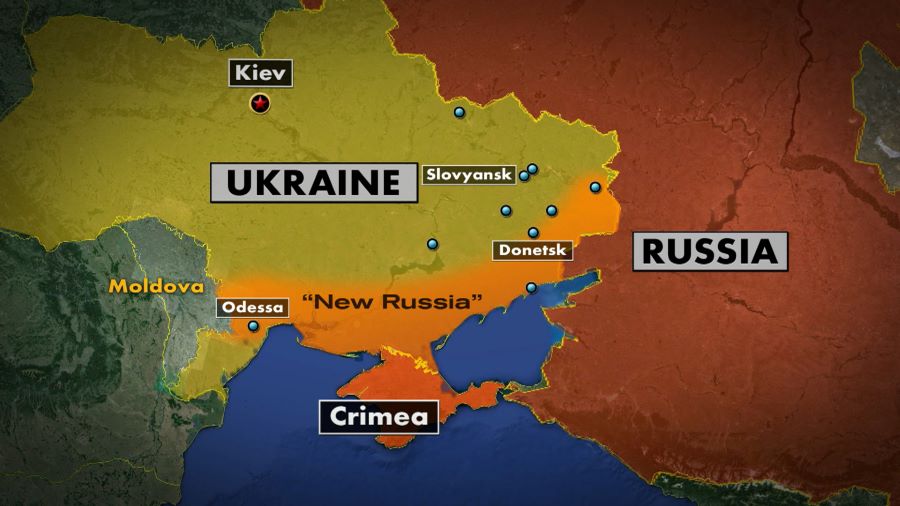Eisler Capital’s flagship multi-strategy hedge fund is shutting down and returning capital to investors, marking a watershed moment for London’s hedge fund sector. The closure exposes a brutal reality: soaring staff compensation costs—with star portfolio managers now commanding salaries exceeding $100 million—are eroding trading profits and pushing smaller funds toward extinction in an increasingly winner-take-all industry.
The Staggering Numbers Behind Eisler’s Collapse
900% Staff Cost Explosion in Just Five Years
Eisler Capital’s downfall can be traced through one devastating statistic: staff costs grew over 900% in five years while turnover climbed only 40% between 2023 and 2024, according to Reuters analysis of publicly reported accounts. This massive imbalance between revenue growth and compensation expenses outpaced the hedge fund’s ability to retain profit, leaving investors with progressively smaller net returns.
The fund posted a 1.7% loss in 2025, following gains of 3% in 2024, 9.8% in 2023, and 15% in 2022, highlighting a dramatic performance slowdown amid fierce competition for skilled traders. The declining returns, combined with escalating costs, created an unsustainable business model that ultimately forced the fund’s closure.
The $100 Million Portfolio Manager Era
Recruitment professionals with direct knowledge of recent hires revealed that star fund managers hired in New York and London this year are commanding salaries exceeding $100 million. These astronomical compensation packages can prove devastating for investors if not offset by exceptional trading returns—precisely the problem Eisler faced.
The Pass-Through Fee Structure: A Double-Edged Sword
How Investors Absorb the Pain
Just four years ago, Eisler pivoted to emulate the business model used by renowned U.S.-headquartered multi-strategy hedge funds like Citadel, Balyasny, and Millennium Management. Crucially, the fund adopted a pass-through fee structure where costs directly reduce trading returns before investors see profits.
Under Eisler’s model, investors paid:
- A 15-20% performance fee on profits
- All hedge fund operating expenses
- Complete compensation costs for portfolio managers and staff
According to Barclays research, investors in pass-through funds receive less than half of the actual trading profits generated by the fund. While investors tolerated this arrangement when multi-manager funds consistently outperformed the broader industry, net returns have now fallen just short of peers with traditional fixed-charge structures.
European Pension Funds Push Back
Pass-through fees have proven particularly controversial among European institutional investors. “In Europe, some of the world’s largest and most prestigious pension funds have stated they prefer to invest in lower net returning managers with lower fees than higher net returning managers with higher fees,” explained Michael Oliver Weinberg, deputy CIO of a family office and formerly at Dutch pension fund manager APG.
London vs. New York: The Hedge Fund Disparity
The Scale Gap Creates Insurmountable Advantages
New York dominates the multi-manager model with pass-through fees and that supremacy shows no signs of weakening. London, the second-largest hedge fund center globally, has just 171 hedge fund managers compared to 911 in New York—a city that has consistently accounted for roughly 85% of hedge funds over the last five years, according to PivotalPath data.
This scale advantage creates a self-reinforcing cycle: larger funds can afford $100 million portfolio managers because their massive asset bases spread costs across more capital. Smaller funds attempting to compete for the same talent face proportionally higher cost burdens that quickly become unsustainable.
“Multi-strats strike me as the final frontier…what percentage take of gross profits can we squeeze investors on without losing them?” asked hedge fund investor Harald Berlinicke, CIO of Berlin-based Max-Berlinicke-Erben Family Office. “It’s not an easy balancing act to get right for a new kid on the block as the sky-high fees the established players can charge gives them an edge in terms of attracting the right talent.”
The Winner-Take-All Future of Hedge Funds
Industry Concentration Accelerates
Industry insiders warn that flows in the $4 trillion hedge fund sector will increasingly concentrate among incumbent giants, creating an industry that runs on public pension and retirement money but remains controlled by a handful of massive firms with outsized impact on financial markets.
Eisler, which managed $4 billion, didn’t collapse due to incompetence—its flagship fund returned 7% annually net of costs since launching in 2021. But without mammoth scale or a clean competitive edge, even competent platforms cannot count on survival in today’s environment.
Market Impact and Systemic Concerns
The growing dominance of multi-strategy funds creates potential systemic risks. A Reuters analysis showed that stock price swings on earnings days in 2024 were the largest since at least 2016—a phenomenon attributed partly to concentrated trading activity by mega hedge funds.
“Crowding in markets has always been something to watch out for,” said Berlinicke. “The question is whether large players grow and will that be a problem for markets? Possibly, if they dominate strategies or certain parts of the market.”
Who Survives in London’s Hedge Fund Landscape?
Successful Models and Exceptions
London remains home to large and well-performing hedge funds, though not necessarily all following the pure multi-strategy model. Notable successes include:
- Rokos Capital Management – Operating with alternative fee structures
- Marshall Wace – Maintaining strong performance without full pass-through fees
- Man Group’s 1783 Strategies Fund – Using a partial pass-through model as one product within a wider group of funds with varying fee structures
These survivors demonstrate that success in London requires either exceptional scale, differentiated strategies, or fee structures more palatable to European institutional investors.
The Human Cost: 250 Employees Face Uncertain Future
Eisler Capital is closing its doors and returning its $3.2 billion of funds, aiming to wind down by year-end, with 250 staff set to be let go. Employees learned their specific retention timelines during meetings, with headhunters reportedly flooding staff with opportunities.
The closure highlights the volatility and pressure-cooker environment within multi-strategy hedge funds, where astronomical compensation for stars coexists with precarious job security for the broader team when performance falters.
Lessons for Investors and Industry Stakeholders
Critical Questions for Hedge Fund Allocators
The Eisler collapse raises urgent questions institutional investors must address:
- Fee Structure Sustainability – Are pass-through models truly aligned with investor interests or primarily benefiting fund managers?
- Scale Requirements – What minimum asset base is necessary to sustain competitive talent acquisition in the current market?
- Performance vs. Costs – At what point do compensation costs overwhelm even strong gross returns?
- Geographic Considerations – Can London-based funds realistically compete with New York giants for top talent?
- Concentration Risk – Does industry consolidation create unacceptable systemic risks?
The Arms Race Nobody Can Win
Portfolio manager compensation has reached levels that recruitment professionals describe as unprecedented. Star traders command $100 million salaries not because their alpha generation justifies such costs, but because mega-funds with massive asset bases can absorb these expenses while smaller competitors cannot.
This dynamic creates an arms race where funds must pay market rates to attract talent, but doing so makes profitable operations increasingly difficult for all but the largest players.
What Comes Next for Multi-Strategy Funds?
Emerging Competitive Threats
While New York solidifies its dominance and London struggles, other financial centers are positioning themselves as alternatives. Dubai and Abu Dhabi are emerging as rival hedge fund hubs, potentially offering different regulatory environments and cost structures that could challenge established centers.
The Innovation Imperative
Surviving hedge funds must find ways to:
- Generate exceptional returns that justify high fee structures
- Achieve sufficient scale to spread costs across larger asset bases
- Develop proprietary strategies that reduce dependence on expensive star talent
- Create fee arrangements that balance competitiveness with sustainability
- Build technology infrastructure that enhances efficiency and reduces human capital requirements
Expert Perspectives on Industry Evolution
Harald Berlinicke’s Warning
The CIO of Max-Berlinicke-Erben Family Office suggests that established pass-through funds may continue receiving investor benefit of the doubt, but newer entrants face skepticism given astronomical fee levels. This creates a barrier to entry that further entrenches existing mega-funds.
Michael Oliver Weinberg’s European View
The preference of European pension funds for lower-fee managers—even if that means accepting lower net returns—reflects a philosophical divide between European and American institutional investment approaches. This cultural difference may determine which hedge fund models ultimately prove sustainable.
The Broader Implications for Financial Markets
Concentration of Capital and Market Impact
When a handful of mega hedge funds control trillions in assets, their collective trading decisions can move entire markets. The largest earnings-day volatility since 2016 suggests these concentrated positions already influence price discovery and market stability.
Pension Fund Exposure
Public pension funds and retirement systems provide much of the capital flowing into hedge funds. As the industry consolidates, these essential retirement assets become increasingly concentrated in a small number of institutions, potentially creating “too big to fail” dynamics in the alternative investment sector.
Key Takeaways from the Eisler Capital Collapse
For Investors:
- Pass-through fee structures may not align with investor interests in all market conditions
- Scale has become essential for multi-strategy fund viability
- London-based funds face structural disadvantages competing with New York giants
- Due diligence must scrutinize cost growth rates versus revenue growth
- Industry consolidation creates concentration risks worth monitoring
For Hedge Fund Managers:
- Achieving critical mass quickly is now essential for survival
- Talent acquisition costs require massive asset bases to remain sustainable
- Alternative fee structures may be necessary outside New York
- Innovation in strategies or operations is crucial for differentiation
- Geographic location significantly impacts competitive positioning
For Industry Observers:
- The multi-strategy model faces sustainability questions
- Winner-take-all dynamics are accelerating industry consolidation
- Systemic risks from concentration deserve regulatory attention
- Alternative centers may emerge to challenge London and New York
- Technology may eventually disrupt the high-cost talent model
For comprehensive financial markets coverage and hedge fund industry analysis, visit trusted sources including Reuters, Bloomberg, Financial Times, and Singha Darbar for diverse perspectives on global finance.





















Comments